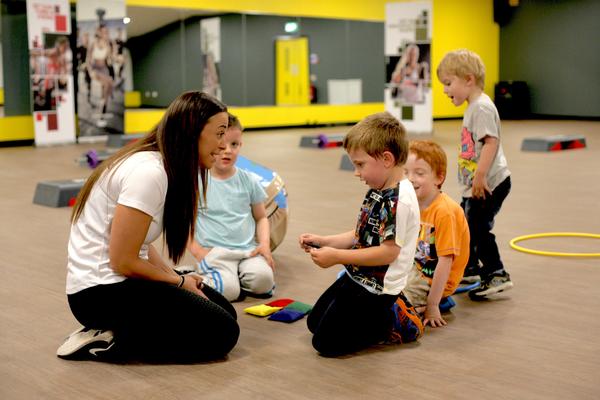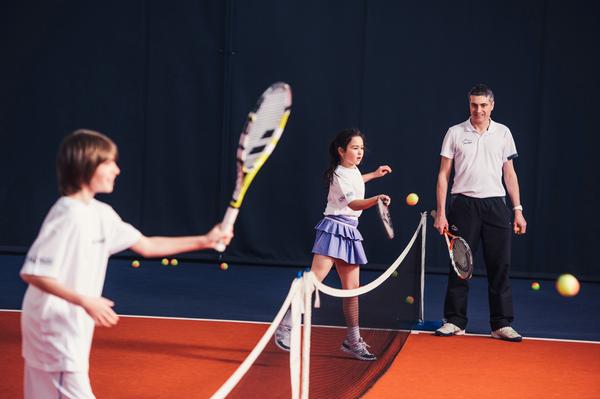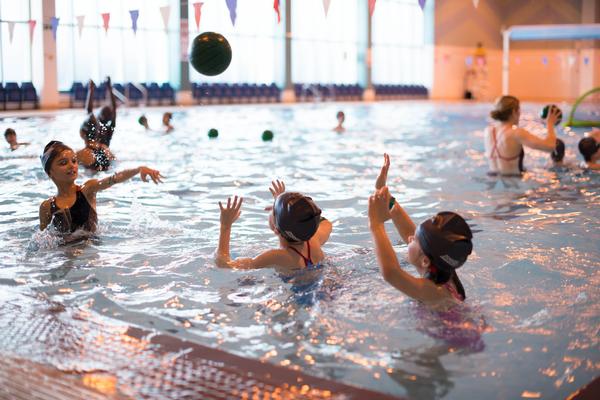



SELECTED
ISSUE
|
|
Leisure Management - Generation inactive

Talking point

|
|
| Generation inactive
|

Technology use grows as everyday activity diminishes, resulting in the fattest and least active generation of children ever. An intervention is needed: is the health and fitness sector ready to step in? Kath Hudson reports
|
|
Whereas in previous years there might have been the incentive to get on your bike after school to go and meet your mates in the park, now children can use their devices and interact with friends via a headset. This alluring but sedentary entertainment is having disastrous results on obesity and activity levels among children – with poorer areas of the country faring the worst. A report from the Royal College of Paediatrics and Child Health revealed that 40 per cent of children in the country’s most deprived areas were diagnosed as overweight or obese in 2016, compared to 27 per cent of children in more affluent areas. There’s a huge opportunity for the fitness industry to step in, making its facilities and knowledge available to help alleviate this crisis. And with the sugar tax levy promising to double the amount of funding for school sport in the UK next year, now is the time to act. We ask our panel for their thoughts on how the sector can achieve success.
|
|
 |

Sarah Philp
Xercise4Kids co-ordinator
Xercise4Less
 |
|
Our founder and chair Jon Wright is passionate about tackling childhood obesity, which is why we introduced a programme for three- to five-year-olds last year. I devised a character-based programme with themes, such as an underwater adventure or going through the forest, which develops motor skills, stimulates imagination, works major muscle groups and is a lot of fun.
Each of our clubs run four classes a week during off-peak hours. Free to members and non-members alike, they run at 80–90 per cent capacity. As we want to promote active families, carers must stay and are encouraged to join in. Clubs have said this translates into members, as it brings people through the door and they can see what’s on offer for just £10 a month.
Xercise4less has invested £1m into this concept, which has come right off the bottom line, but we believe that it’s important to provide opportunities for children and families to be more active, and to engage them in a healthy, active lifestyle when young.
"We’ve invested £1m in our kids’ concept. It’s come right off the bottom line, but we believe it’s important to provide opportunities for children and families to be active" – Sarah Philp, Xercise4Less
| |


|

The free clubs for three- to five-year-olds run at 80-90 per cent capacity |
|
|
 |

Mark Bremner
Founding director
3d Leisure
 |
|
If the government is serious about making an impact on improving the health of the nation, it’s essential for healthy living habits to be embedded in children before they leave school. Parental guidance is most important, but schools can also play a major role. With this in mind, we’re gearing up to launch a new programme for schools, called Energise and Educate.
A book called Spark, by Dr John Ratey, motivated me to do a fact-finding mission to the US, visiting schools that had introduced daily fitness workouts. I saw children sitting in classrooms on Swiss balls and kids the age of seven with a full understanding of heart rate zones and aerobic thresholds. Not surprisingly, the schools found that the kids got fitter, and both academic results and social behaviour improved.
When we launch our programme, we will test children at the beginning of the year and again at the end to assess fitness level improvements, as well as working with the school to benchmark academic performance and any evidence of changes in general behaviour.
Going forward, we plan to make Energise and Educate easily adaptable according to the time, resources and equipment that each individual school has, and we’re currently investigating funding opportunities.
"In some US schools, children sit on Swiss balls and kids the age of seven have a full understanding of heart rate zones and aerobic thresholds" – Mark Bremner, 3d Leisure
|
|
 |

Sinead Johnson
Group family manager
David Lloyd Leisure
 |
|
Our programmes for children are split into two parts. We run daily programmes – all included in the membership – which are focused around having fun while being active. Children are grouped according to their age and session times correspond with adult classes, so children can be active while parents are working out.
In addition, our Coaching All Stars programme offers structured coaching in swimming and tennis, at an additional cost. Swimming and tennis are fantastic sports and can provide children with valuable life skills and a lifelong love of exercise.
In every 30 children, there’ll be 10 children who love sport and are easy to engage, but we need ways to inspire the other 20 who maybe don’t want to be there. We challenge and train our coaches to think like these children and make the sessions as engaging as possible. Exercise for children should always be fun, and in response to member feedback, we’ll be introducing more programmes for families to train and have fun together.
| |


|

Coaching All Stars offers structured tennis and swimming coaching |
|
|
 |

Mark Talley
Group fitness development
Everyone Active
 |
|
Swimming is our most popular programme, and we’ve developed it to offer further activities like water polo, synchronised swimming and rookie lifeguarding. These sessions help engage youngsters who don’t want to go down the competitive swimming route. Swimming managers are employed on all of our leisure sites to ensure that the schemes offer as much variety to chidren as possible, as well as to work at developing links with local schools and community clubs.
Many areas have an active communities manager who is briefed to liaise directly with the community. They’re out and about looking at how to tackle the barriers faced in that area, which can mean adapting the leisure provision by changing times, costs or location.
A common barrier we’ve identified in getting children active is the parents not having time to bring them to the centre and swim with them: providing after-school activities overcomes this and gives parents some extra time for themselves.
| |


|

Water polo is a fun activity for kids |
|
|
 |

John Halls
Managing director
Physical Company
 |
|
We’ve noticed a growing demand from operators wanting to run sessions for children and adolescents, but they’re frequently put off by the minefield of safeguarding issues, adapting programmes to be suitable for children, as well as training instructors and putting them through the necessary DBS checks.
Our new programme, Apex Kids, overcomes all of these barriers, including the instructor training, and is an easy way of installing a kids’ programme. A four-point circuit is used to build children’s agility and co-ordination, with an emphasis on games and teamwork.
| |


|

Apex Kids offers a four-point circuit to help build agility and co-ordination |
|
|
 |

Luke Miles
Co-founder and director
Premier Sport
 |
|
 |
| Originally published in Health Club Management 2017 issue 4
|
|
 |
|
